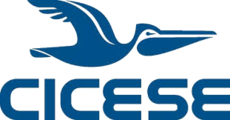Por favor, use este identificador para citar o enlazar este ítem:
http://cicese.repositorioinstitucional.mx/jspui/handle/1007/4244| Evaluación de servicios ecosistémicos en techos verdes extensivos: producción de alimentos, desempeño térmico y biológico Extensive green roofs ecosystem services evaluation: Food production, thermal and biological performance | |
| Diana Verónica López Silva | |
| RODRIGO MENDEZ ALONZO IVETT ZAVALA GUILLEN | |
| Acceso Abierto | |
| Atribución | |
| Ecosistema mediterráneo, sustentabilidad, techos verdes, desempeño térmico, transferencia de calor, agricultura urbana, plantas nativas Mediterranean ecosystem, sustainability, green roofs, thermal performance, heat transfer, urban agriculture, native plants | |
| La urbanización y el cambio climático afectan el ambiente, los ecosistemas y el bienestar humano. Por ello, es necesario implementar tecnologías sostenibles en las ciudades que contrarresten estos efectos. Un ejemplo son los techos verdes (GRs), que son soluciones basadas en la naturaleza para la mitigación y adaptación de los efectos negativos de la urbanización y el cambio climático. Los GRs proveen múltiples servicios ambientales, como la regulación micro-climática, el aislamiento térmico y acústico, la reducción del agua de escorrentía, el ahorro energético, la captura de CO2 y otros contaminantes. Además, crean oportunidades para agricultura urbana, promueven la salud mental y la recreación, proveen un hábitat para biodiversidad local incluyendo polinizadores, entre otros. Estos servicios tienen un impacto positivo en el bienestar humano y la sustentabilidad de edificaciones y ciudades. Sin embargo, esta tecnología ha sido poco estudiada en el Noroeste de México, donde el clima semiárido genera retos particulares para la implementación de GRs y la cuantificación de sus beneficios. Para estimar algunos de estos beneficios, se evaluó el efecto aislante y el consumo energético de dos tipos de GRs (un humedal y uno con Sedum acre) en comparación con techos convencionales (de concreto y reflectivo) mediante experimentación y simulaciones energéticas. Los GRs disminuyen la temperatura al interior de una casa de referencia hasta 5.5 °C en días calurosos y la aumentan hasta 3.4 °C en días fríos respecto a un techo de concreto (RR); además, el RR requiere hasta 62 % más energía para climatización que los GRs; y el techo reflectivo es un 47 y 25 % más costoso que el techo humedal y el techo con Sedum acre. Además, se cuantificaron los requerimientos de instalación y mantenimiento de tres tipos de GRs (huertos urbanos [HUGRs], jardines de plantas nativas [NGRs] y humedales [HGRs]). Para ello, se registraron los costos de instalación/ mantenimiento y se midió la cantidad de agua y tiempo de mantenimiento requerido para cada tipo de GR, así como su efecto en la cobertura, supervivencia, biomasa y rendimientos de cosecha (HUGR). Respecto a costos iniciales, los montos fueron de MXN $1,362 y 1,982/m2 para el HUGR y el NGR, con un costo anual en mantenimiento de MXN $668 y 123/m2, respectivamente. En cuanto al mantenimiento, los HUGR consumieron anualmente 17% más agua que el NGR y 42% menos agua que el HGR; asimismo, requirieron 94 y 92% más tiempo de man.... Urbanization and climate change negatively affect the environment, ecosystems, and human well-being. Therefore, cities need to implement sustainable technologies to counteract these effects. Green roofs (GRs) are nature-based solutions suitable to mitigate and adapt to the negative consequences of urbanization and climate change. They provide multiple environmental services, such as microclimate regulation, thermal and acoustic insulation, reduction of runoff water, energy savings, capture of CO2 and other pollutants, and they can create opportunities for urban agriculture, promote mental health and recreation, and provide a habitat for local biodiversity including pollinators, among other benefits. These services positively impact human well-being and the sustainability of buildings and cities. However, this technology demands more profound study in Northwest Mexico, where the semi-arid climate represents a challenge in GR implementation and in the quantification of its benefits. Therefore, we evaluated the insulating effect and energy consumption of two types of GRs (a wetland and a Sedum acre GR) in comparison to conventional roofs (a concrete roof and a cool roof) through experimentation and energy simulations. We found that GRs keep the indoor temperature of a reference house up to 5.5 °C cooler on hot days and 3.4 °C warmer on cold days; also, the concrete roof needs up to 62 % more energy for air conditioning than the GRs, and the cool roof is 47 and 25 % more expensive regarding air conditioning annual costs than the wetland roof and the S. acre GR, respectively. In addition, we quantified the installation and maintenance requirements of three types of GRs (urban gardens [HUGR], native plant gardens [NGR], and wetlands [HGR]). To do so, we tabulated the installation/ maintenance costs and measured the amount of water and maintenance time required for each type of GR, as well as their effect on coverage, survival, biomass, and yields (HUGR). The initial costs were MXN $1,362 and 1,982/m2 for the HUGR and the NGR, with annual maintenance costs of MXN $668 and 123/m2, respectively. Concerning maintenance, the HUGR consumed 17 % more water annually than the NGR and 42 % less water than the HGR; likewise, they required 94 and 92% more annual maintenance time than the NGR and HGR, respectively. HGR presented the highest values of survival, height, cover, and biomass, followed by NGR (except for biomass) and HUGR. Our results indicate different GR solu... | |
| CICESE | |
| 2025 | |
| Tesis de doctorado | |
| Español | |
| López Silva, D.V. 2025. Evaluación de servicios ecosistémicos en techos verdes extensivos: producción de alimentos, desempeño térmico y biológico. Tesis de Doctorado en Ciencias. Centro de Investigación Científica y de Educación Superior de Ensenada, Baja California. 147 pp. | |
| TÉCNICAS DE CULTIVO | |
| Aparece en las colecciones: | Tesis - Ciencias de la Vida |
Cargar archivos:
| Fichero | Descripción | Tamaño | Formato | |
|---|---|---|---|---|
| tesis_Diana Verónica López Silva _2025.pdf | Descripción completa de la tesis | 5.18 MB | Adobe PDF | Visualizar/Abrir |
